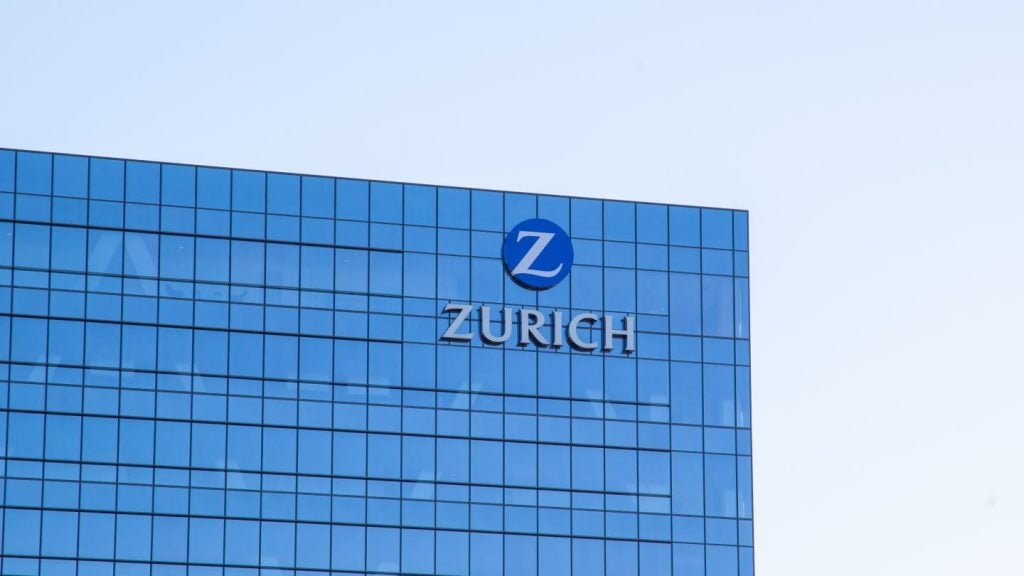
The French insurance industry, the world’s fifth largest and Europe’s second largest in 2012, insurance industry shrank from EUR209.0 billion (US$290.3 billion) in 2009 to EUR192.5 billion (US$255.2 billion) in 2013.
The life segment accounted for 60.6% of the industry’s gross written premium in 2013 and was worth EUR116.8 billion (US$154.8 billion) in 2013. Non-life had a share of 28.4%, worth EUR54.6 billion (US$72.4 billion), while the personal accident and health segment held 11.0%, or EUR21.1 billion (US$28.0 billion). The impact of deteriorating economic conditions on insurance segments varied. The life segment experienced weakening demand. France’s low interest rates, lack of major reforms and high tax rates adversely affected growth of French businesses, thereby affecting the non-life segment. This, along a growing aging population, affected the insurance industry.
The low working hours compared to developed countries such as the UK, US and Canada, high costs associated with labour and high corporate and individual tax rates discouraged business expansion. Despite reforms in the labour markets during the eurozone crisis, high costs associated with labour drained employer’s profits. This increased unemployment rates, which reached 10.1% at the beginning of 2014. Reduced incomes and high consumption levels slowed down people’s long-term savings.
Life insurance policyholders preferred short-term products during the crises, which forced insurers to develop cost-effective short-term products. A well-developed social security system, better quality of service provided by the public sector, government contribution towards pension, health and accident coverage increased competition among private insurers.
In total, France has 115 compulsory classes of insurance, including pension, health and motor third-party liability. The government covers many insurance expenses and has encouraged the private sector in order to reduce its financial burden and provide competitive services to its people.
This is well illustrated in the reinsurance segment wherein under the government’s catastrophic insurance program, the Caisse centrale de réassurance (CCR) acts as a reinsurer to private insurance companies that cover catastrophic losses. Aside from the CCR, a number of reinsurance firms such as Scor Re, Swiss Re and Hannover Re also operate in the reinsurance segment. France’s high level of natural disasters commands operating efficiency from insurers and can lead to price wars.
The large number of mandatory insurance classes, the dual financing nature of the social security system and the frequency of natural disasters helped raise public awareness of insurance products and the risks they cover. The industry is highly competitive and comprises domestic companies, foreign firms, mutual insurance groups and insurers led by banks. In total, 405 insurers operated in France by the end of 2012, of which 240 are registered under the French Insurance Federation (FFSA). Small insurers are prone to ongoing M&A activity due to the expected implementation of Solvency II directives by 2016.
In 2013, pension funds, motor insurers and reinsurers reduced their premium prices to increase sales and provide simple, cost-effective products to their customers. The 10 leading insurance companies held 79% of the industry’s total gross written premiums, further contributing to increased competition among large insurers to gain traction. Although insurers have professional underwriting skills, profitability remained an issue due to the cost consciousness of consumers during the crises. Technological advancement is expected to support underwriters to enhance their operating efficiencies over the next few years.
Led by an improvement in general economic conditions and government measures to support growth of business activities, the industry is projected to value EUR219.5 billion (US$309.1 billion) in 2018. Insurers are expected to increase their operational efficiency and diversify risk by expanding into emerging markets as the implementation of Solvency II directives will command high capital and statutory requirements.
Tax reform
On November 15, 2013, the French Finance Minister (FM) presented the 2013 Supplementary Finance Bill (PLFR) to the French Council of Ministers. Under this bill, the FM will aim to create new products in the life insurance segment designed to benefit the consumer portfolio, thereby gaining increased tax revenues, as high tax rates prevail for life insurance products. In addition, the Ministry introduced Euro Growth in January 2014, wherein the investor pay into a capital guarantee fund for a fixed period of eight years. The product envisages a multi-support contract, in which an investor will benefit through income from both fixed savings and unit-linked products. The Ministry also aims to introduce new products that channel savings towards SMEs. This will reduce investment risks, and offer growth opportunities to insurers by diversifying their capital. In addition, increased investments in SMEs will create job opportunities and support demand for individual insurance products. Hence, tax reforms are projected to boost the industry as well as the French economy.
Demographics
Like most countries in Europe, France faces the problem of an aging population. In 2012, the French population aged 50-64 years comprised 19.3% of its total population of 65.6 million. Worse, only a quarter of the population is aged 20-39 years. The average life expectancy increased from 81 years in 2008 to 81.5 years in 2012. This created significant demand for life insurance products, especially for pension and retirement plans – a trend that is expected to continue.
This, along with the shrinking workforce, has increased pension deficits in the country. By the end of November 2012, the estimated annual pension cost rose to 14% of GDP. According to an official report published in December 2012, the French pension deficit will reach EUR20 billion (US$28.3 billion) by the end of 2020. As a result, the government implemented pension reforms in 2013. In the same year, the French Prime Minister Jean-Marc Ayrault implemented social charges, and increased the number of years of service required for an employee to benefit from the state pension system from 41 to 43, which need to be completed by the end of 2035.
Though these measures were criticized by analysts and trade unions, they have benefited the private pension system as many French residents were excluded from the state pension system. The compulsory nature of basic pension contributions under the social security system – primarily of the second pillar – is expected to benefit the pension category.
Weak economy
According to the International Monetary Fund (IMF), France’s GDP only grew marginally by the end of 2013. The IMF forecasts GDP to increase by 1.03% in 2014 and to 1.53% by 2015. The unemployment rate is expected to remain high at 11.0% and 10.7% in 2014 and 2015 respectively. Furthermore, general government expenditure as a percentage of GDP is expected to decline by 0.3% in 2014 and by 0.7% by 2015. When France failed to reduce its public debt in May 2013, the European Commission provided a two-year period to bring down its public deficit to only 3.0% of GDP. However, France missed this target in 2014, bringing down its public debt to 4.3% at the end of 2013, rather than that point’s goal of 4.1%.
In July 2013, slow economic growth, high unemployment and an increased public deficit all prompted Fitch to downgrade the French economy from AAA to AA+, a trend which was previously followed by Standard & Poor’s and Moody’s. All these factors reflected weak economic conditions in the country. As the leading French insurance segment, life insurance is therefore projected to only grow slowly over the next few years.
This is not helped by overall low productivity, According to an April 2013 survey by French news magazine Le Point, the French population works 1,679 hours a year, less than other major European economies such as Germany, where residents work for 1,904 hours a year. The average retirement age for French residents is 60.6 years, which is again lower than other European economies such as the UK, where it is 64.1 years. The magazine concluded that, on average, an individual French resident’s number of hours of work per year was among the lowest of all developed European economies. The 35-hour work week has also been highlighted as an issue by French independent state auditors.
Conversely, tax rates are among the highest in Europe. The statutory payroll tax – which is applicable for employers or employees – is the highest in the world. The 2014 payroll tax stood at 43% of employees’ annual salary, while the equivalent figure was 30% in the Czech Republic and Spain, 11% in the UK and as low as 5% in the US. The high level of payroll taxes increases employee costs, discouraging companies from hiring and leading to further unemployment.
According to the French Finance Ministry, in 2011, over 8,000 households in the country paid effective taxes of over 100% of their incomes. Though tax rates have fallen, effective taxes on French residents who earn above EUR1.0 million (US$ 1.3 million) will remain high in 2014, at 75% of their earnings. These high tax rates, along with low interest rates, have led to low levels of savings and investments.
Distribution channels
French life insurers’ main distribution channels include bancassurance, direct marketing and brokers, although all channels recorded negative growth in terms of new business gross written premium during the review period, as during this time the French life segment declined substantially.
Bancassurance was the preferred channel for both consumers and insurers, primarily due to its large demographic coverage and cost-effective nature. The presence of large financial institutions and companies has made leading banks to either enter into bancassurance agreements with them or to banks developing their own insurance companies to sell products. The bancassurance channel is preferred for distributing pension products and other savings-type life insurance products with post-retirement benefits, and accounted for 62.7% of total gross written premium new business generated in 2013.
The most common bancassurance arrangement in France is the integrated model, in which banks partner with wholly owned captive insurance subsidiaries. Crédit Agricole Assurances, for example, one of the leading life insurance providers, includes banks such as Crédit Agricole and Crédit Mutuel, which distribute life insurance policies through their networks. The channel is expected to remain the leading distribution channel over the forecast period. The gross written premium new business through this channel is expected to increase from EUR1.4 billion (US$1.8 billion) in 2013 to EUR1.9 billion (US$2.7 billion) in 2018.
Direct marketing of products has also increased. Online distribution primarily strengthened the channel, driven by increased internet penetration. The increasing number of internet-enabled mobiles and tablets facilitated the accessibility of data to prospective customers, heating up competition among insurers. To address this competitive environment, insurers are continually updating their technology; in April 2014, for example, Allianz partnered with Simplon.co as part of its project of training its employees with technological advancements. Through this tie-up, the company intends to digitally reach and support the economically less developed sections of the French society.
Brokers were the third largest channel, accounting for 11.1% of gross written premium new business generated in 2013. This was due to the independent and unbiased financial savings and management advice that brokers provide.
French life insurers also promote their products and services through channels such as event advertising. BNP Paribas, for example, advertised its la-retraite-en-clair.fr website at an event called Salon des Seniors, held in Paris in April 2014. The website guides French residents on different aspects of retirement and pension schemes available, enabling them to plan their life after retirement.
Bancassurance and direct marketing are projected to remain the life insurance segment’s key distribution channels over the forecast period. Their combined share is expected to reach 77.0% by 2018.







